MVVS 116-BOXER IRS - V1.7 is a powerful gas engine designed for propeller-powered radio-controlled model planes, capable of meeting the expectations of acrobatic racing. With a maximum power output of 14 HP at 6400 RPM and a maximum torque of 15 N/m at 6100 RPM, it provides ample power for large-scale models. The engine features a durable construction with a weight of 3100g, ensuring reliability and stability during operation. Its wide RPM range of 1000-7500 allows for precise control and adjustment to suit different flying styles and aircraft configurations.
MVVS 116-BOXER IRS - V1.7 is a powerful gas engine designed for propeller-powered radio-controlled model planes, capable of meeting the expectations of acrobatic racing. With a maximum power output of 14 HP at 6400 RPM and a maximum torque of 15 N/m at 6100 RPM, it provides ample power for large-scale models. The engine features a durable construction with a weight of 3100g, ensuring reliability and stability during operation. Its wide RPM range of 1000-7500 allows for precise control and adjustment to suit different flying styles and aircraft configurations.






-
 1
1
-
 2
2
-
 3
3
-
 4
4
-
 5
5
-
 6
6
MVVS 116-BOXER IRS - V1.7 Owner's manual
- Type
- Owner's manual
- This manual is also suitable for
MVVS 116-BOXER IRS - V1.7 is a powerful gas engine designed for propeller-powered radio-controlled model planes, capable of meeting the expectations of acrobatic racing. With a maximum power output of 14 HP at 6400 RPM and a maximum torque of 15 N/m at 6100 RPM, it provides ample power for large-scale models. The engine features a durable construction with a weight of 3100g, ensuring reliability and stability during operation. Its wide RPM range of 1000-7500 allows for precise control and adjustment to suit different flying styles and aircraft configurations.
Ask a question and I''ll find the answer in the document
Finding information in a document is now easier with AI
Related papers
Other documents
-
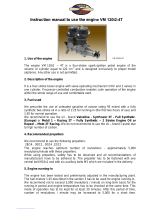 Valach Motors VM 120i2-4T User manual
Valach Motors VM 120i2-4T User manual
-
DLA 58cc Operating Instructions Manual
-
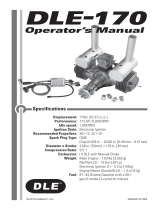 DLE Engines DLEG0170 Owner's manual
DLE Engines DLEG0170 Owner's manual
-
 DLE Engines DLEG0120 Owner's manual
DLE Engines DLEG0120 Owner's manual
-
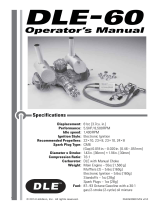 Hobbico DLE-60 User manual
Hobbico DLE-60 User manual
-
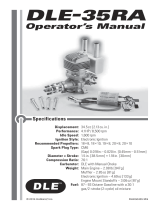 DLE Engines DLEG0435 Owner's manual
DLE Engines DLEG0435 Owner's manual
-
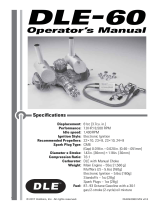 DLE Engines DLE-60 Owner's manual
DLE Engines DLE-60 Owner's manual
-
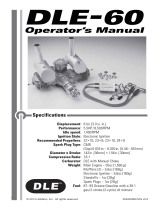 Hobbico DLE-60 User manual
Hobbico DLE-60 User manual
-
 DLE Engines DLEG0455 Owner's manual
DLE Engines DLEG0455 Owner's manual
-
Evolution 35GT User manual













